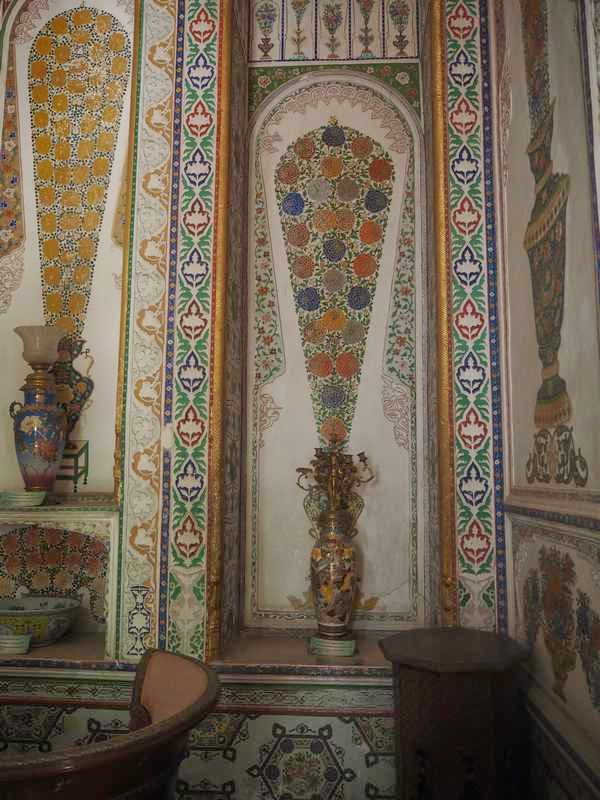Our hotel, the Komil is a restored/refurbished courtyard house of a 19th century merchant. It is a bit of a labyrinth with at least 3 courtyards but is very nice. The other guests are mostly French - indeed most tourists seem to be French, German or Italian and I.have never before been asked if I was Portuguese!
On Tuesday morning (22nd) we started our tour of Boukara by visiting the Mausoleum of Samamid built between 892-943 AD with its fine brickwork. Next stop was Bolo Hauz (1712) with 20 columns reflected in a pool. Across the square is the Winter Palace built on the site chosen by Cyrus in the 6th century BC. The 19thC emir was notoriously cruel and it was here in 1842 that two British army officers were publically executed after digging their own graves.
. Then on to Poi Kalan with its minaret built in 1127. Here Job is supposed to have struck the ground with his stick from where a water supply sprang up.
The city is much more geared to tourists than anywhere else we have been and there are a lot of stalls selling ikat fabric, embroidered items, wood carvings, miniature paintings, puppets and so on.
The women in Bukhara dress quite differently from those in Khiva. Here the most common outlfits are matching above the ankle slacks and dresses in bright colours with a lot of sparkles. The men wear the square skull cap. Pilgrimage is a popular pastime often to mausoleums of imam/sufi saints.
Bill has been pleased to find that you can buy draught been in empty water bottles filled while you wait for about $1.70/l and it is very good. I find the dried apricots and various nuts, pistachios, peanuts and walnuts very good but bananas from Equador are $1 each.
The plain street frontage of the Komil hotel, Bukhara
Our windows on our courtyard.
Mausoleum of Samamid built between 892-943 AD
Not bad brickwork 1100 years ago!
Typical local dress in Bokhara.
Old style street butcher.
More modern refrigerated butcher.
Some of the 20 columns of the Bolo Hauz (1712)
Bolo Hauz ?
Lion in a courtyard at the Winter Palace in Bokhara.
Walls of Khiva.
Fresh Russian style Bread
Cauliflowers for sale.
Tilework at Poi Kalon a 16thC mosque.
Silk carpet weaving. Girls must be 16 at least.
Not sure of the function of the handles on the furnace. They were forging knives.
Madressah Nodiz Devon begun in 1622. Note the birds on the tiles.
Bottling draught beer at a very reasonable price and a good product.
Bokhara puppets
Mulberry tree on the courtyard of a madressah
The dining room of our hotel.
Shortage of labels- will follow later
Brass Chandeliers at Bahauddin Naqshbandi a popular local pilgrimage site
Pilgrims circling around an ancient mulberry tree at Bahauddin Naqshbandi.
Pilgrims relaxing and praying at Bahauddin Naqshbandi.
The Emir's Summer Palace at Sitorai Makhi Khosa built about 1900 in a mix of Russian and central Asian styles.
The white room where the mirrors are decorated with white plaster.
Miniatures on "silk paper" (actually mulberry bark paper)
There are still peacocks in the grounds of the Emir's palace but no longer the extensive menagerie he had. We were too early for the roses but there are heaps of rose bushes.
Chor Minor





































The colours are beautiful. What sort of fabric were the women holding up? Loving your blog Kate and Bill.
ReplyDeleteJacaranda, they are called 'Suzani'. They are silk embroidery made by Uzbek people usually.
ReplyDelete